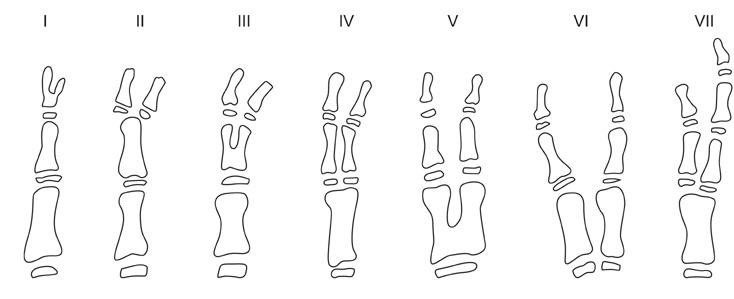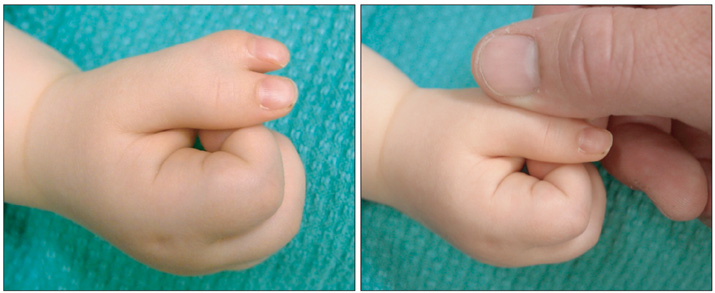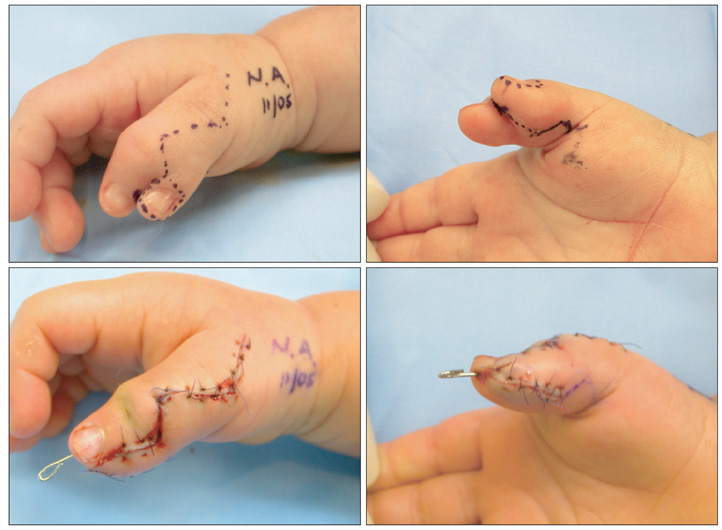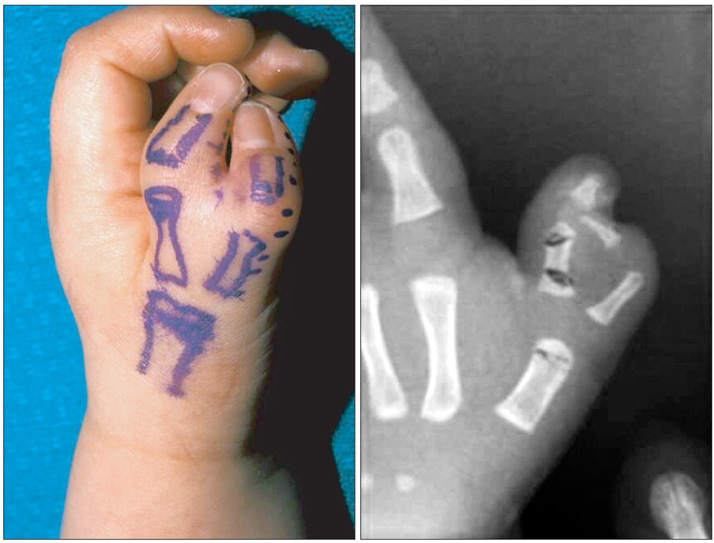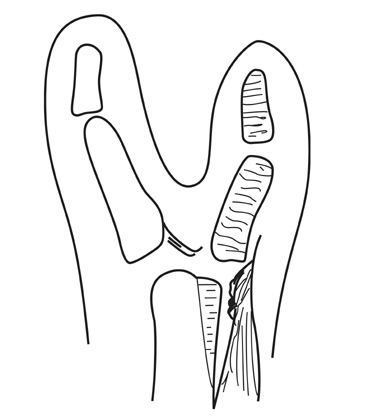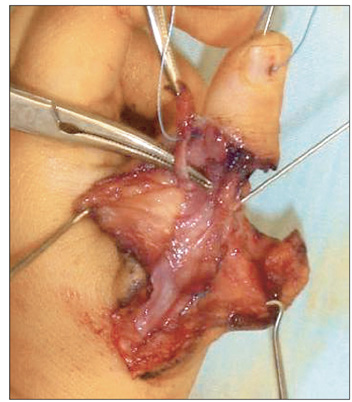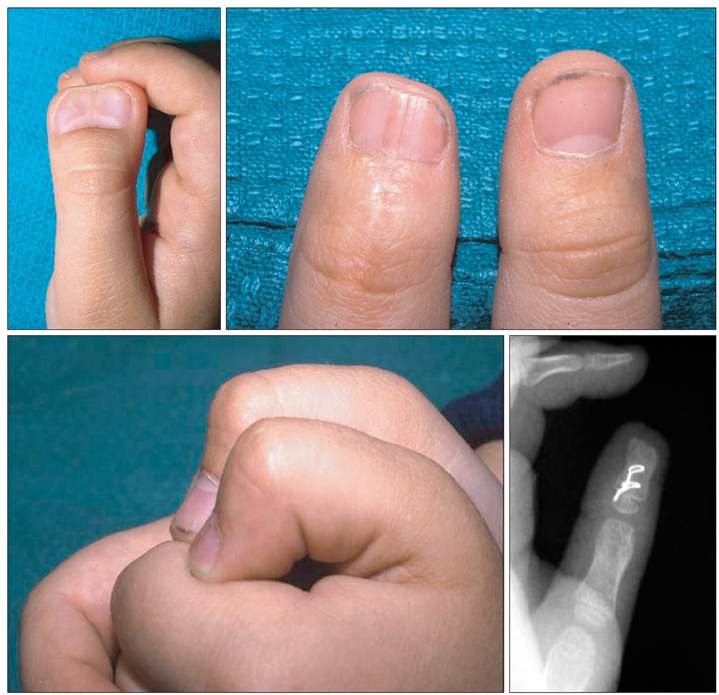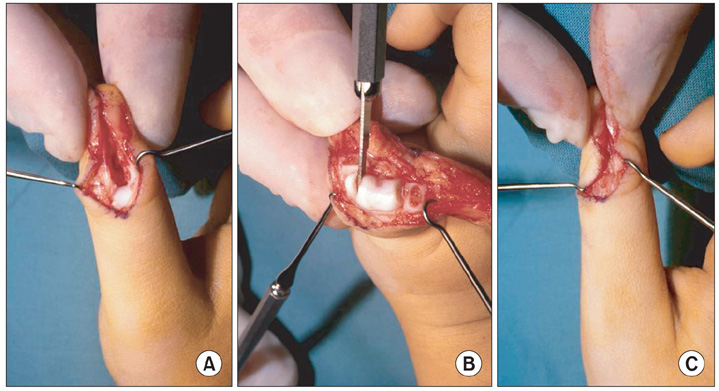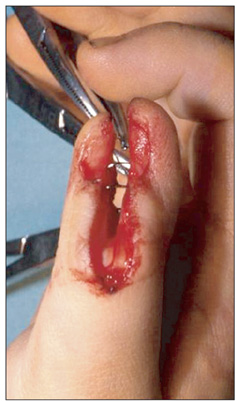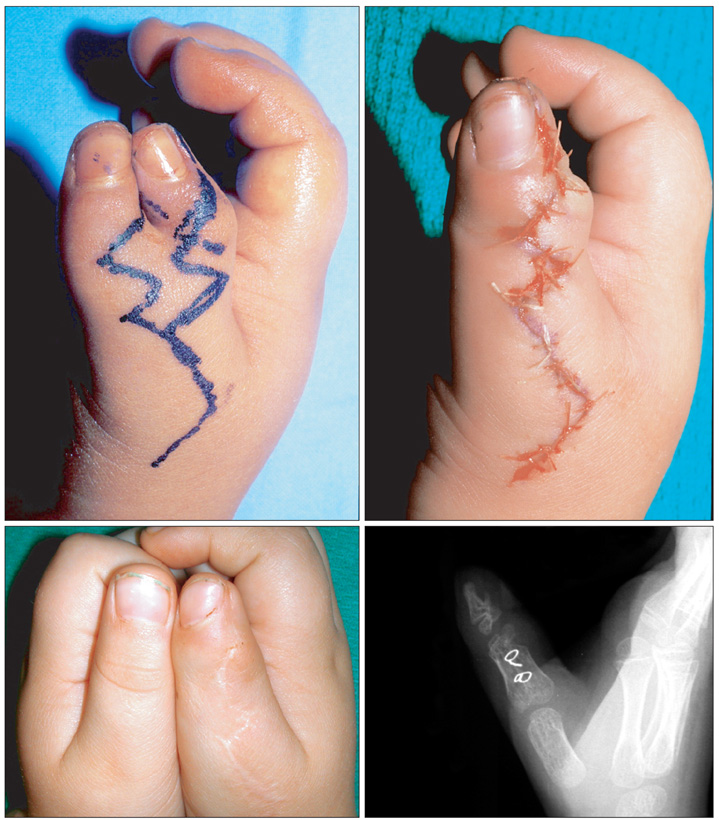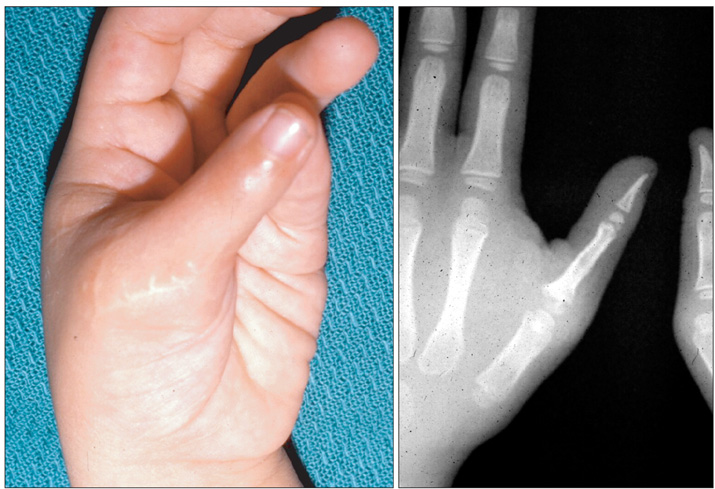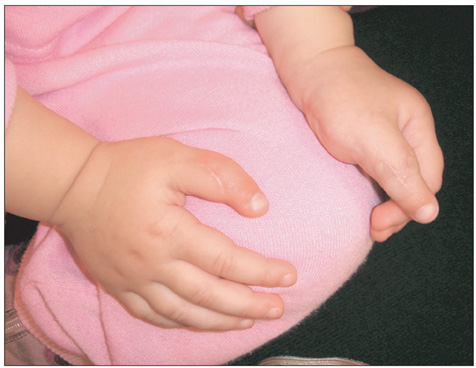Clin Orthop Surg.
2012 Mar;4(1):1-17. 10.4055/cios.2012.4.1.1.
Thumb Duplication: Concepts and Techniques
- Affiliations
-
- 1Department of Hand Surgery and Peripheral Nerve Surgery, University of Sydney, Royal North Shore Hospital, St. Leonards and Department of Hand Surgery, University of Sydney, Children's Hospital at Westmead, Westmead, Australia. mtonkin@surgery.usyd.edu.au
- KMID: 1245395
- DOI: http://doi.org/10.4055/cios.2012.4.1.1
Abstract
- Within the Oberg, Manske, Tonkin (OMT) classification, thumb duplications are a failure of formation and/or differentiation affecting the radial-ulnar axis of the hand plate. The Wassel description of seven types of thumb duplication provides a good structure from which an approach to management is based. The aim of surgical reconstruction is to obtain a stable, mobile thumb of adequate size and appropriate shape. The most common form of reconstruction is removal of the lesser digit and reconstruction of the dominant digit. Surgical techniques address the problems of deviation, instability and lack of size. The disadvantages of the Bilhaut-Cloquet procedure, these being joint stiffness and a nail ridge, may be lesser concerns when reconstruction of one digit will not create a satisfactory thumb of adequate mobility, stability, alignment and size. Complicated problems of triphalangism, triplication, ulnar dimelia and the rare circumstance in which neither of the duplicated thumbs may be adequately reconstructed present specific challenges which demand alternative techniques.
Keyword
MeSH Terms
Figure
Reference
-
1. Swanson AB. A classification for congenital limb malformations. J Hand Surg Am. 1976. 1(1):8–22.
Article2. Oberg KC, Feenstra JM, Manske PR, Tonkin MA. Developmental biology and classification of congenital anomalies of the hand and upper extremity. J Hand Surg Am. 2010. 35(12):2066–2076.
Article3. Wassel HD. The results of surgery for polydactyly of the thumb. Clin Orthop Relat Res. 1969. 64:175–193.4. Kozin SH. Wolfe SW, Hotchkiss RN, Pederson WC, Kozin SH, editors. Deformities of the thumb. Green's operative hand surger. 2011. 6th ed. Philadelphia, PA: Elsevier;1383–1394.
Article5. Bilhaut M. Guerison d'un pouce bifide par un nouveau procede operatoire. Congr Fr Chir. 1890. 4:576–580.6. Miura T. Duplicated thumb. Plast Reconstr Surg. 1982. 69(3):470–481.
Article7. Horii E, Nakamura R, Sakuma M, Miura T. Duplicated thumb bifurcation at the metacarpophalangeal joint level: factors affecting surgical outcome. J Hand Surg Am. 1997. 22(4):671–679.
Article8. Gupta A, Kay SP, Scheker L. The growing hand. 2000. London, UK: Mosby;244–252.9. Ogino T, Ishii S, Minami M. Radially deviated type of thumb polydactyly. J Hand Surg Br. 1988. 13(3):315–319.
Article10. Dobyns JH, Lipscomb PR, Cooney WP. Management of thumb duplication. Clin Orthop Relat Res. 1985. (195):26–44.
Article11. Tada K, Yonenobu K, Tsuyuguchi Y, Kawai H, Egawa T. Duplication of the thumb: a retrospective review of two hundred and thirty-seven cases. J Bone Joint Surg Am. 1983. 65(5):584–598.
Article12. Naasan A, Page RE. Duplication of the thumb: a 20-year retrospective review. J Hand Surg Br. 1994. 19(3):355–360.13. Manske PR. Treatment of duplicated thumb using a ligamentous/periosteal flap. J Hand Surg Am. 1989. 14(4):728–733.
Article14. Tonkin MA, Rumball KM. The Bilhaut-Cloquet procedure revisited. Hand Surg. 1997. 2(1):67–74.
Article15. Tonkin MA, Bulstrode NW. The Bilhaut-Cloquet procedure for Wassel types III, IV and VII thumb duplication. J Hand Surg Eur Vol. 2007. 32(6):684–693.
Article
- Full Text Links
- Actions
-
Cited
- CITED
-
- Close
- Share
- Similar articles
-
- Evolutionary and Comparative Genomics to Drive Rational Drug Design, with Particular Focus on Neuropeptide Seven-Transmembrane Receptors
- Heterodigital flap as a solution for a thumb defect: a case report
- A Case of Tubular Duplication of the Esophagus
- Clinical experiences in Thumb reconstruction
- The Effect of Thumb Position on Median-Radial Latency Difference

